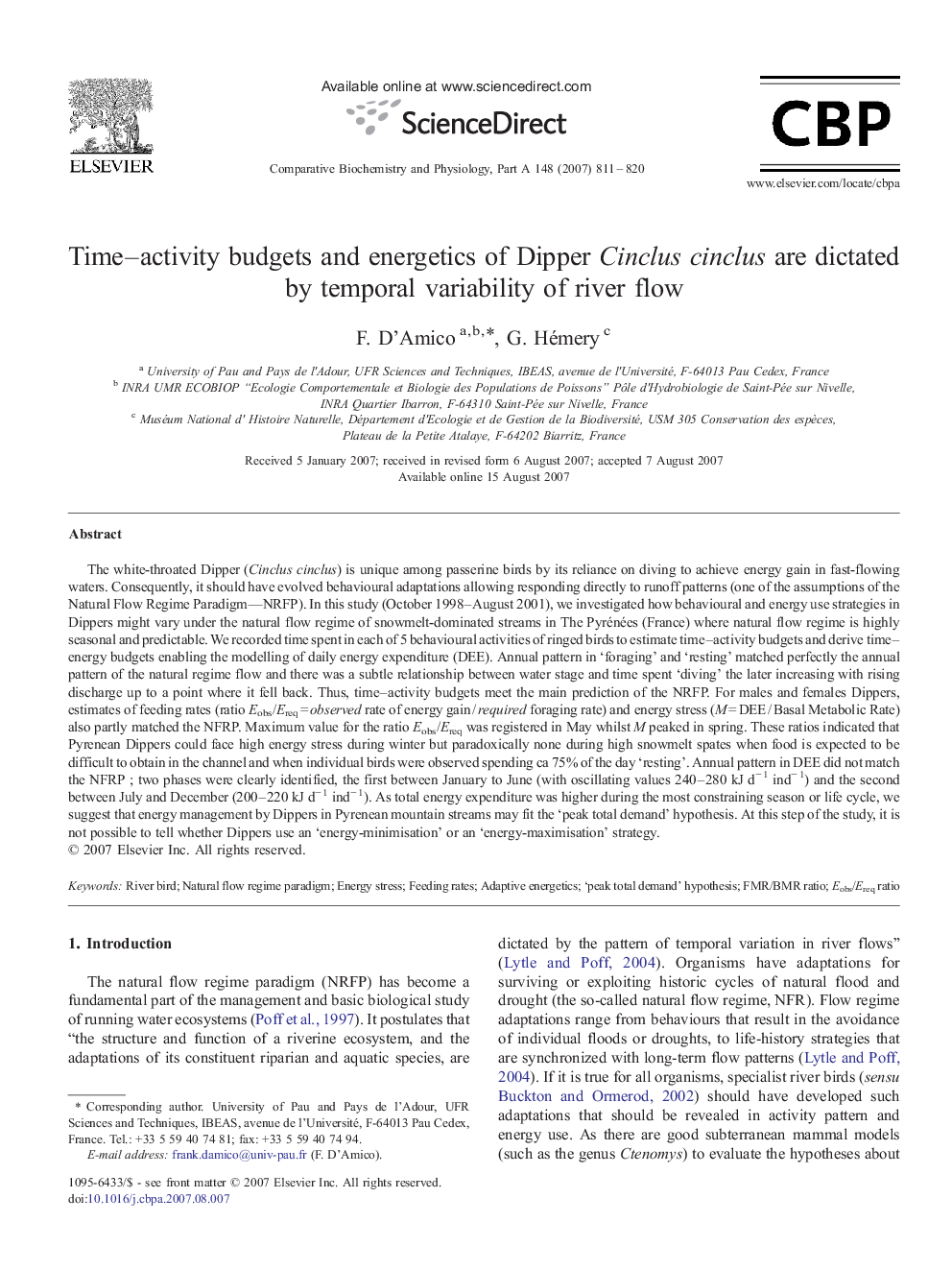| کد مقاله | کد نشریه | سال انتشار | مقاله انگلیسی | نسخه تمام متن |
|---|---|---|---|---|
| 1974073 | 1060336 | 2007 | 10 صفحه PDF | دانلود رایگان |

The white-throated Dipper (Cinclus cinclus) is unique among passerine birds by its reliance on diving to achieve energy gain in fast-flowing waters. Consequently, it should have evolved behavioural adaptations allowing responding directly to runoff patterns (one of the assumptions of the Natural Flow Regime Paradigm—NRFP). In this study (October 1998–August 2001), we investigated how behavioural and energy use strategies in Dippers might vary under the natural flow regime of snowmelt-dominated streams in The Pyrénées (France) where natural flow regime is highly seasonal and predictable. We recorded time spent in each of 5 behavioural activities of ringed birds to estimate time–activity budgets and derive time–energy budgets enabling the modelling of daily energy expenditure (DEE). Annual pattern in ‘foraging’ and ‘resting’ matched perfectly the annual pattern of the natural regime flow and there was a subtle relationship between water stage and time spent ‘diving’ the later increasing with rising discharge up to a point where it fell back. Thus, time–activity budgets meet the main prediction of the NRFP. For males and females Dippers, estimates of feeding rates (ratio Eobs/Ereq = observed rate of energy gain / required foraging rate) and energy stress (M = DEE / Basal Metabolic Rate) also partly matched the NFRP. Maximum value for the ratio Eobs/Ereq was registered in May whilst M peaked in spring. These ratios indicated that Pyrenean Dippers could face high energy stress during winter but paradoxically none during high snowmelt spates when food is expected to be difficult to obtain in the channel and when individual birds were observed spending ca 75% of the day ‘resting’. Annual pattern in DEE did not match the NFRP ; two phases were clearly identified, the first between January to June (with oscillating values 240–280 kJ d− 1 ind− 1) and the second between July and December (200–220 kJ d− 1 ind− 1). As total energy expenditure was higher during the most constraining season or life cycle, we suggest that energy management by Dippers in Pyrenean mountain streams may fit the ‘peak total demand’ hypothesis. At this step of the study, it is not possible to tell whether Dippers use an ‘energy-minimisation’ or an ‘energy-maximisation' strategy.
Journal: Comparative Biochemistry and Physiology Part A: Molecular & Integrative Physiology - Volume 148, Issue 4, December 2007, Pages 811–820